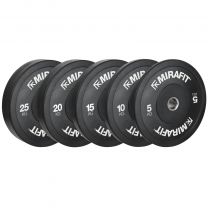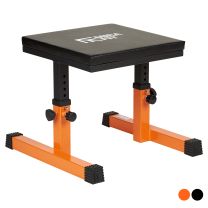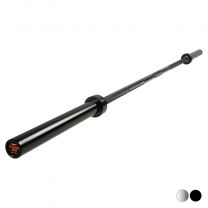Knee Pain When Squatting
Knee Pain When Squatting

It’s often said that if you only do one exercise, it should be Squats.
While they are one of the best exercises you can do for improving your strength, fitness and health, they are also one of the heaviest lifts you’d usually do as part of your routine. It’s therefore crucial that your form and posture are correct throughout the lift to avoid injury.
Knee pain when squatting is very common for people who train regularly and when it happens it can be a major setback to strength training progress. But according to Nick Pringle, Sports Therapist Clinician and Senior Development Officer at Active Suffolk, knee pain after squatting is something you can work to overcome.
Nick has cared for hundreds of patients who have come to him with knee pain as a result of squat lifts. We’ve asked him what people can do to avoid injury while squatting, as well as ways to work around knee pain, to continue lifting and stay on track with weight-training progress.
I GET KNEE PAIN WHEN I SQUAT – WHAT SHOULD I DO?

It can be extremely frustrating when your training is stopped because you start to feel pain when lifting heavier. But Nick points out that there are different approaches to take depending on the severity of the pain
“With any sudden symptoms such as swelling, redness, heat etc. use the usual first aid approach by reaching for the ice packs, compress and elevate,” he says.
“If you‘re experiencing severe or repeated knee pain, then I’d recommend stopping squat lifts and seeking further assessment from a physio. The knee joint is complicated, and a one-size treatment doesn’t fit all. There are many reasons why you might be experiencing knee pain.”
Nick adds the caveat: “You may have been diagnosed with an injury that will require you to skip leg day for now, but it’s worth noting that mechanical load promotes tissue repair, and the fitter and healthier we are, the quicker we recover. So, think about adapting your training to work around your knee pain.”
WHAT’S HAPPENING IN THE KNEE JOINT WHEN YOU SQUAT?

The squat is a compound exercise involving multi-joint movements which work a high number of muscles simultaneously.
Nick says: “The joints needed to complete a squat include the shoulders, back, hips, knees and ankles and engages muscles in the upper and lower back, core, quadriceps, glutes, hamstrings, adductors, calves and more.
“There’s basically a lot going on in one movement and it’s a great test for strength, flexibility and balance all in one.”
Nick says that, in his practice, one of the first things he asks his patients to do is to complete a series of squat lifts as he says it reveals a lot about their physical abilities which all contribute towards symptoms.
“The knee joint is a complicated structure and is one of the most loaded joints in the body,” he says. "It’s made up of four bones for mobility; articular surfaces and meniscus for joint protection and prevention of friction forces. It’s also made up of ligaments and joint capsules for stability.
“This make up shows us that the joint was designed to move, bend and squat!
“When we squat, the pressure on our knees is approximately eight times our normal bodyweight, and this rises to twenty times during a jump squat,” he adds.
“During the motion of a squat, the muscles, tendons and ligaments in and around the knee all kick in to help the knee remain in a stable position. This includes many muscles that contract to help with the lowering phase, the lifting phase and the stabilising of the movement.”
WHAT ARE SOME COMMON CAUSES OF INJURY?

A plain fact of strength training, and really life in general, is that injury and symptoms are always a possibility. But you can hugely reduce the risk of injury by doing the right things.
Nick says: "There are a lot of factors that can contribute to issues related to injuries and knee pain weightlifters may experience during heavy squats.
“These include a history of previous injuries or managing current or other injuries and symptoms.
“Overuse and overloading is a really common cause of injury too.
“Don’t underestimate the importance of full-body conditioning either. Your body may not have conditioned or adapted well enough to start adding on the plates!
“Biomechanics or poor technique may cause issues too. Especially if there are imbalances or muscle weaknesses. In this instance, the body is weak in one area and therefore the body is relying on other areas to compensate. Also, what is happening with the knees? Are they falling outwards or flexing beyond your toes? Both suggest poor technique,” Nick continues.
“Flexibility and muscle tightness or being hypermobile may also cause symptoms. Poor ankle dorsiflexion may cause issues as having flexibility in this area is the secret to a good technique and a deep squat. But poor flexibility will lead to more pressure on the knee.”
HOW CAN I PREVENT GETTING A KNEE INJURY WHILE SQUATTING?

The debates around warming up and recovering from a heavy session will rage on long after you’ve finished reading this article. But Nick says properly preparing yourself through consistent warm-up exercises, proper recovery techniques and isolated leg muscles exercises will give you the best chance of remaining injury free.
Nick says: “There’s a fancy word I hear a lot, which sport scientists like to use to impress their athletes called ‘Mechanotransduction’. Basically, it means lightly loading the body before a workout. I strongly recommend taking this on board. Before your set of squats, try removing all or most of the weight and warming the muscles up with a light load.
“Effective recovery techniques are also so important for avoiding injury, Nick adds. “I recommend avoiding ice baths as this will diminish training adaptations. But do try compression garments, stay hydrated, active rest techniques and nutrition supplements to support effective recovery.
“Further isolated strength training can help too, particularly with symptoms in the knee. Any increased quad strength helps spread the load across a bigger surface area, putting less pressure on the knee joint when performing the squat lift,” Nick concludes.
If you’re still getting little niggles despite taking on all of the above, it’s worth rethinking your training plan and making small adjustments to sets, reps, weights, rest time, frequency and types of exercise.
PROPER SQUAT FORM
As most personal trainers will tell you, few people execute the correct form while squat lifting, especially if they have never had any professional guidance.
The basic points to follow to squat correctly are:
Stand up straight with the bar rested on your upper back muscles, and your feet shouler-width apart.
Squat down, pushing you knees out to the side, keeping your back straight. Your heels should remain planted on the floor.
Squat right down until your hips are lower than your knees, this is called a deep squat.
From that point push back up, pushing your knees and chest out. Remain controlled as you stand up straight.
As you reach the standing point, lock you knees and hips at the top.
Nick has worked with hundreds of people to correct form to prevent injury and says there is a simple test you can do to assess your form:
TEST YOUR TECHNIQUE:
He says: “The test is a simple one, but it will reveal so much about your technique.”
“Perform a deep squat without any weights and watch what happens to your heels. Do they stay planted or lift off the ground?”
By removing the weight, you’re reducing the risks of injury, so use the ease of movement to keep an eye on your form and see if you feel strong and confident throughout the movement. If your heels lift off the floor it’s an indication that you are leaning forward and are therefore less steady. Try to focus on this as you add weight back on.
In summary, while injury and niggles are always a possibility when weight training and strength building, the health and quality of life benefits of squat lifting far outweighs the risks of serious injury. As Nick advises: “By implementing proper technique, recovery and taking note of what your body is telling you, you can set yourself up to avoid injury and make progress with your training.”
We’d like to thank Nick Pringle and Active Suffolk for contributing to this feature.
If you’d like to read more about doing compound movements, check out our feature on the seven best compound exercises for maximum gains.
You can read our complete guide to squat racks here
For more content, follow us on Instagram, YouTube, TikTok, and on our official Mirafit Facebook page.
Enter your email to signup to our newsletter
Tags: Equipment > Bars and Weight Plates ; Exercise Type > Strength ; Misc > Recovery







